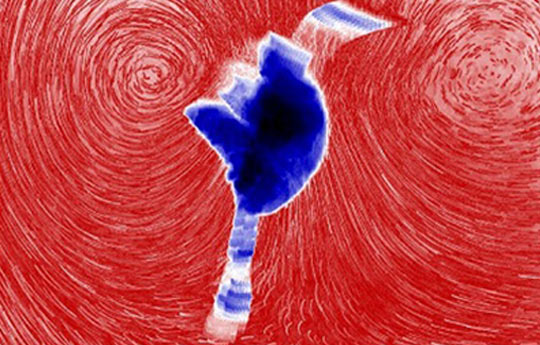MARINE BIOLOGY
Microscopic aquatic world: techniques to eat without dying in the attempt
Researcher describes the crossings and dilemmas tiny organisms face when trying to feast.
For Darwin, the species that survive are neither the strongest nor the fastest, but the most adaptable to changes. In line with this idea, in lakes and oceans there are various microscopic organisms that managed to restructure their dietary habits to survive and the zooplankton is not an exception.
Marine biology describes zoopankton as a group of aquatic organisms that do not have photosynthesis capacity (heterotrophs) and feed with organic matter through ingestion, including smaller organisms. But, how do they find their food in the immensity of a place where not even one ray of light can be filtered? In order to answer that question, Rodrigo Gonçalves, CONICET assistant researcher at the Estación de Fotobiología Playa Unión, province of Chubut, received an external scholarship and travelled to Denmark. The aim was to study the mechanisms this species uses to satisfy its desire to eat.
“We knew that organisms have different types of swimming and feeding techniques and they do not have the sense of sight to identify the food. Instead, they detect the small fluid disturbances that the prey generates when it moves”, Gonçalves explains.
According to the study published in the North American magazine Proceedings of the National Academy of Sciences (PNAS), these disturbances are hydronamic signals that propagate in a way similar to the one of the sound, but the difference is that the medium is not the air but the water.
What is essential is invisible to the eye
The zooplankton swims blindly through marine currents until it detects some particle that can identify as a prey due to the fluid disturbances (“noise”) it generates when moving.
These “noises” are hydrodynamic signals generated by the prey when moving, as it also needs to eat. So, when it moves it emits signals that reveal its presence. This produces a double game: in order to eat, a microorganism exposes itself to be eaten.
In order to observe these marine adventures, the researcher and his team used a high speed video camera to capture the way in which these animals can solve this crossroads.
“We found that, in general, they do it with two types of locomotion whose main objective is to make the least possible ‘noise’. The first group chooses to generate a feeding micro-current to capture their preys. Although this current evidences their positions, it allows zooplankton to catch more food and thus produce enough energy to maintain the levels of the population. In the second case, the microorganisms stay still and when they detect a particle they do a small jump and catch it, thus only generating intermittent hydrodynamic signals, which are more difficult to detect. However, although this reduced ‘visibility’ is less efficient for the feeding purposes, it allows maintaining de levels of the population with a relatively lower catch of food”, the researcher describes.
The study suggests that in different opportunities both mechanisms have evolved, over and over, because both strategies have been reported in completely dissimilar species; thus, setting a possible general pattern for the microscopic aquatic world.
The all-seeing lens
The high speed video camera increases the human capacity to observe what is out of range and it is the only possible way to keep the pace with zooplankton, as these organisms move extremely fast: they can detect, capture and catch a prey in milliseconds
The researcher explains that when a specific laser is added to this technique, it is possible to illuminate the water where the microorganisms are and capture not only their movement but also the one of their possible food. That allowed them to infer the signals they send when they are moving or eating apart and how detectable they could be to be a potential predator.
“This way of taking pictures is known as Particle Image Velocimetry (PIV) and it allowed us to describe patters that could be applied to other aquatic species”, Gonçalves concludes.
- By Jimena Naser
